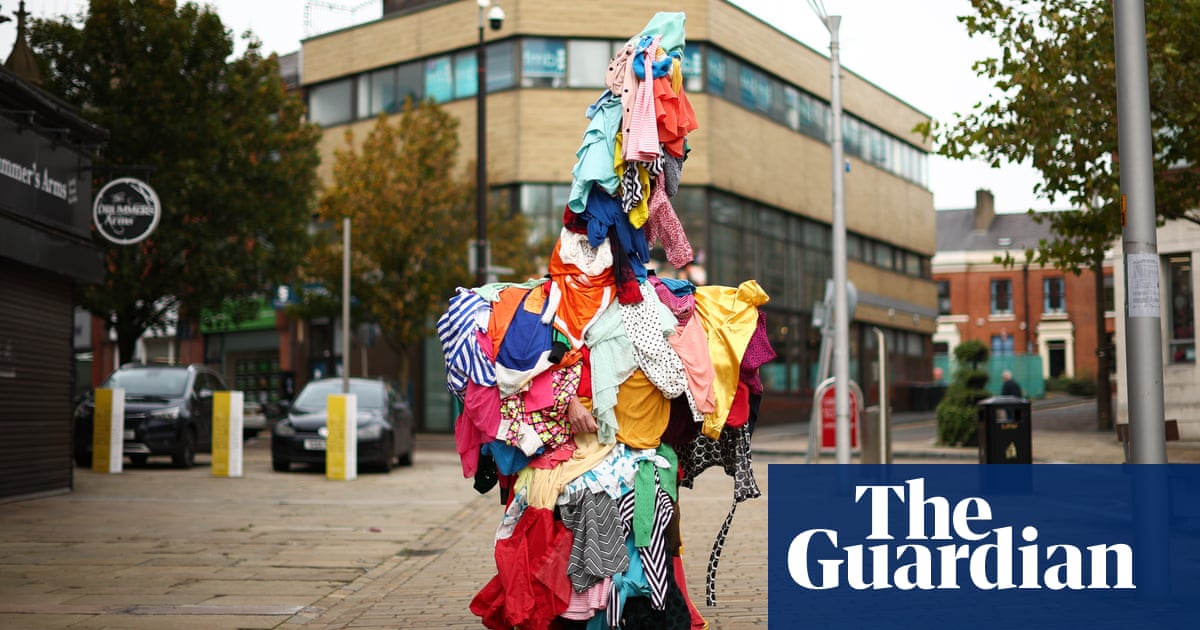
The year 2023 has been one of hyper-fast fashion, extreme price tags (both high and low), and toxic spills of polyester clothing. It was the year the zombie in the room – the sheer volume of clothing we are producing and buying – took on a life of its own.
The connection between fossil fuels and the synthetics in our clothes really hit home. “Fossil fashion is at the core of many of fast fashion’s worst problems: cheap materials, over-reliance on synthetics, a spiralling waste crisis and spiking emissions,” said Fossil Fuel Fashion, a new organisation that launched at New York Climate Week in September, bringing together a coalition of organisations aiming to phase fossil fuels out from the industry.
Fossil-fuel based polyester is cheap and is the fibre of choice for hyper-fast fashion, which has continued to dominate the market, despite a torrent of criticism in June after the leading producer, Shein, paid for six fashion influencers to travel to their factories in China. The influencers then posted glowing reviews from behind the scenes and the $66bn fashion brand continues to seduce us into buying clothes we didn’t know we wanted and definitely don’t need. The race to the bottom has only just begun, however. The Chinese shopping app Temu, which is giving Shein a run for its money, with its “lightning” 99% discount deals, has been downloaded more than 7m times since it launched in the UK in April.
But it hasn’t all been bad news. The link between farming and fashion has never been more talked about; “regenerative” is one of the year’s biggest buzzwords. As Safia Minney, founder of Fashion Declares, which is calling for radical change in the industry, explains, fashion is not just about ensuring farmers keep carbon in the soil, but the whole process – from the way cotton, hemp, flax, wool and leather is farmed to end-of-garment life.
One win for regenerative fashion took place in October, when Justine Aldersey-Williams presented the UK’s first homegrown, home-spun jeans made from flax and woad cultivated on wasteland in Blackburn, Lancashire.
With a few distractions – thank you, Louis Vuitton, for the million-dollar handbag, the price tag of which is still not enough to justify the Crayola-coloured crocodile it’s made from – it was also the year that saw a fresh focus on the horrific pollution of waste colonialism. In February, The Or Foundation – based in Kantamanto market in Accra, Ghana, it is dedicated to tackling the injustice of the fashion’s trash problem – published its report Stop Waste Colonialism. It explained how “the fashion industry uses the global secondhand clothing trade as a de facto waste management strategy”. In May, a group of clothing traders went to Brussels to debate with policy holders about European legislation on extended producer responsibility (EPR) – to make sure that Kantamanto market is part of the conversation, because the world’s fashion trash is ending up on their doorstep.
Artist Jeremy Hutchison took the idea of trash on your doorstep one step further when he became a “monster of post-consumer imperialism” in the form of a suffocating 8ft textile zombie called Dead White Man. It was a collaboration with The Or Foundation and was in reference to the Ghanaian phrase obroni wawu, meaning dead white man’s clothing, which is how the market traders of Kantamanto market refer to their stock of cast-offs from the global north. Dead White Man performed at the British Textile Biennial in Blackburn in October and then made impromptu visits to all of its favourite clothing suppliers, including Marks & Spencer, where it was filmed by bemused shoppers as it took the escalator to the lingerie department. M&S is one of the brands whose labels frequently wash up on the beaches of Accra.
In September, Clare Press, the Sydney-based founder of the podcast Wardrobe Crisis, essential listening for anyone interested in sustainable fashion, published her latest book, Wear Next: Fashioning the Future, exploring some of the solutions to many of these problems. “Over-production and hyperspeed are two of the biggest problems facing the fashion industry,” she says. In its annual Fashion Transparency Index, Fashion Revolution reported that 88% of major fashion brands still do not disclose their annual production volumes. According to the Index, globally there is enough clothing in the system to clothe the next six generations of people (if the planet doesn’t break down before then).
But this was also the year European legislation started to dig in to regulate fast fashion. In December, the European Parliament agreed to ban the destruction of unsold clothing, accessories and footwear as part of its new “eco design” framework, which will also see clothing given a Digital Product Passport. Expected to come into force in 2026, a QR code will give shoppers greater transparency over the materials, manufacture and even tips on how to repair their item. Without regulation, brands are still not taking responsibility for their products, the materials they use and their supply chains. Legislation will start to push them into taking collective action.
This year has also seen the continued exploitation of garment workers around the world. 2023 marked 10 years since the Rana Plaza factory disaster that killed 1,134 people, with at least another 2,000 injured when the factory in Dhaka, Bangladesh collapsed. In December, more than 50 brands signed up to the newly extended International Accord, which has contributed to safer working conditions for more than 2 million garment factory workers in Bangladesh, with 48 signing up for the Bangladesh Safety Agreement and 88 for the more recent Pakistan Accord.
But there continues to be a lack of transparency. In November, a woman in Derbyshire found a Chinese prisoner’s ID card in the sleeve lining of her Regatta coat, raising warnings over modern slavery hidden in supply chains. And poverty pay is still the industry norm. As the Clean Clothes Campaign reported, on 25 June this year union leader Shahidul Islam was beaten to death for labour rights activism in Tongi, Bangladesh. Ongoing protests against the new minimum wage in Bangladesh resulted in four workers dying in November, and at least 115 workers and trade unionists in prison. According to Maeve Galvin, Fashion Revolution’s global policy and campaigns director, “we are so far from workers achieving social justice that it is shameful.”
On a more hopeful note, young people are continuing to buy their clothes second hand, online or at car boot sales. Fast fashion brands are seeing that Depop, Vinted and eBay are their biggest competitors and have started turning over valuable retail space to second-hand clothing. As Press observes in Wear Next, while fashion consumption speeds up, we are also seeing the parallel rise of the slow fashion movement with the repair revolution (including repair and alterations apps such as Sojo and The Seam) and DIY fashion continuing to thrive. Now that’s progress.












